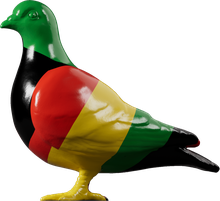Post-Medieval — C.1680; 17th century
Jug
In 1672, John Dwight set up a pottery in Fulham. He became the first Englishman to make stoneware, produced by firing clay at very high temperatures. He copied ‘Cologne ware’, a German stoneware that was imported into England. In 1676, the Glass Sellers’ Company agreed to buy the whole of his stoneware production for three years. In the 1970s, excavations at Fulham revealed the extent of Dwight’s wares and experiments.
This is a large natural salt glazed Fulham stoneware jug with a characteristic pouring spout, cordoned rim and frilled base. The vertically ribbed strap handle has a scrolled terminal. The ovoid shaped body is decorated with an applied medallion depicting St George and the Dragon, the patron saint of England, together with part of the garter motto 'HONI SOIT QUI MAL', the remaining two words are missing. This form is a close copy of German stonewares attributed to the Langerwehe kilns.
- Category:
- Post-Medieval
- Object ID:
- 97.90/1
- Object name:
- jug
- Object type:
- Artist/Maker:
- Fulham Pottery, Dwight, John
- Related people:
- Related events:
- Related places:
Fulham, London [Hammersmith and Fulham], Hammersmith and Fulham
- Production date:
- c.1680; 17th century
- Material:
ceramic, stoneware
- Measurements/duration:
- H 427 mm, DM 250 mm, W 180 mm (overall)
- Part of:
- —
- On display:
- —
- Record quality:
- 100%
- Part of this object:
- —
- Owner Status & Credit:
Permanent collection
- Copyright holder:
digital image © London Museum
- Image credit:
- —
- Creative commons usage:
- —
- License this image:
To license this image for commercial use, please contact the London Museum Picture Library.

